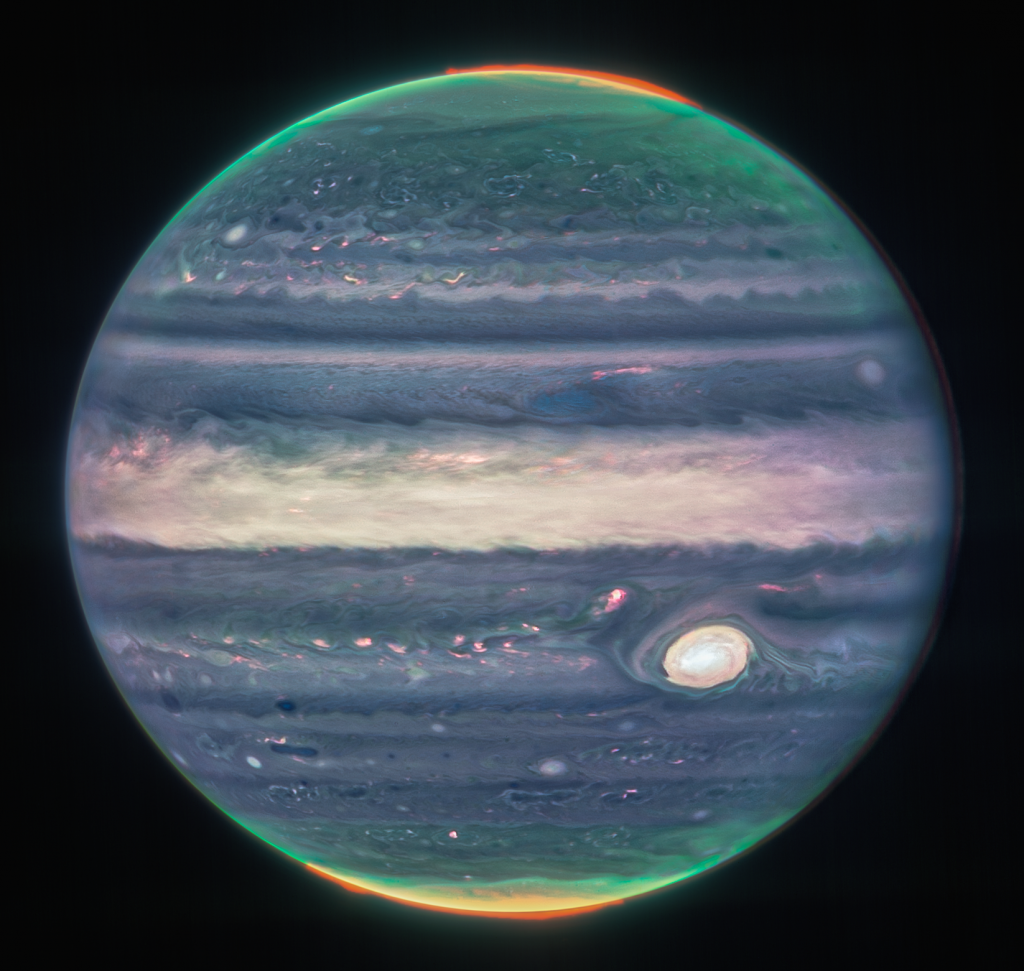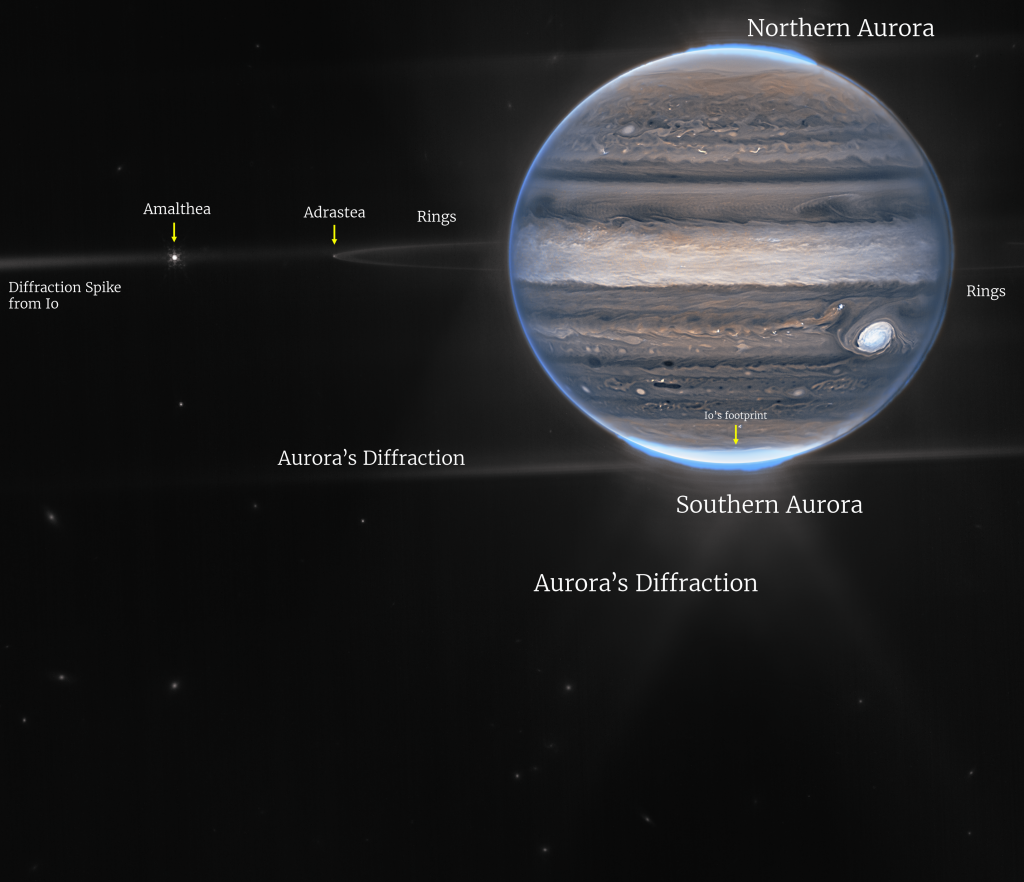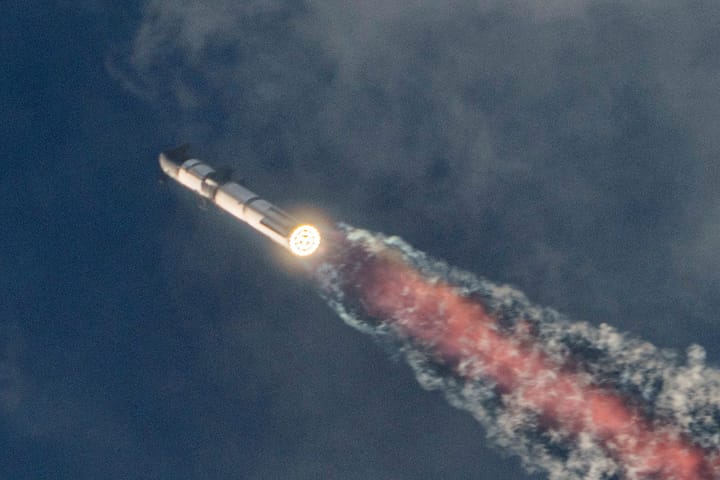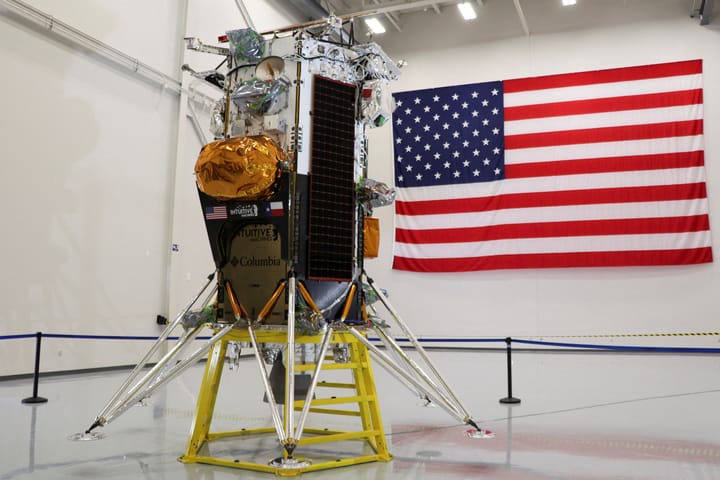JWST takes stunning new pictures of Jupiter

A few minutes every morning is all you need.
Stay up to date on the world's Headlines and Human Stories. It's fun, it's factual, it's fluff-free.
About a month ago, the stunning first photos from the US$10 billion James Webb Space Telescope (JWST) were released to the public, with a promise that more photos of all sorts of things in the universe would be getting their time in the spotlight.
Well, on Tuesday, that thing was the planet Jupiter, and the JWST photos of it look different from any picture you’ve ever seen of the gas giant before. See, the camera uses a series of filters that turn infrared light into visible light that humans can see, so instead of the bright orange and red planet most of us are used to seeing, the planet looks bluer.
Scientists were really excited about these pictures, though. In addition to being some of the most detailed photos of the planet yet, they’re also able to see some things that we haven’t been able to see in the past. The brighter spots on the photo are higher in the atmosphere, while the darker ones represent areas with little cloud cover. You can see the planet’s Great Red Spot, a storm that “could swallow the Earth," NASA said, in bright white, its auroras coming off the poles in a brilliant red-green, and you can even see Jupiter’s moons and satellites.
Key comments:

“We hadn’t really expected it to be this good, to be honest," said professor Imke de Pater, a planetary astronomer at the University of California, Berkeley. “It’s really remarkable that we can see details on Jupiter together with its rings, tiny satellites, and even galaxies in one image."
“The brightness here indicates high altitude – so the Great Red Spot has high-altitude hazes, as does the equatorial region," said the vice president for science at the Association of Universities for Research in Astronomy (AURA), Heidi Hammel. “The numerous bright white ‘spots’ and ‘streaks’ are likely very high-altitude cloud tops of condensed convective storms."




Comments ()